Friendship, war and separation are some of the big themes that children can explore while reading Michael Morpurgo's The Butterfly Lion...
How different would life be if your best friend ware a lion? This is just one of the questions explored by Michael Morpurgo in The Butterfly Lion. Told through recollections of a childhood friend, we are plunged into the past to learn about Bertie’s time growing up in South Africa, his transferral to an English boarding school and subsequently his role as a soldier in the First World War. However it is the themes of friendship, loyalty and overcoming the odds that children will identify with most in this wide-ranging tale.
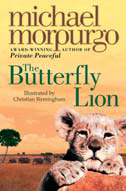 The story begins in the present, with a boy running away from school. As readers, we never learn the name of this boy, whose main role is to be our advocate inside the narrative, asking the questions we would like to ask and delving further into Bertie’s life.
The story begins in the present, with a boy running away from school. As readers, we never learn the name of this boy, whose main role is to be our advocate inside the narrative, asking the questions we would like to ask and delving further into Bertie’s life.
Introduce the book with the arrival of a misdirected parcel at your own school, intended for this boy. It might contain a letter from his mother, referring to the concerns he feels; some money for buying tuck; a pair of socks left at home during the holidays; a new school tie and a home-made cake. Exploring the parcel will allow opportunities to make predictions about the boy, discussion of how it would feel to be away from home and the pros and cons of boarding school. Extend this into an oral or written persuasive or discursive piece (with the audience perhaps your own headteacher), or alternatively the children could write a letter to add to the parcel, sympathising or congratulating the boy on his life at boarding school.
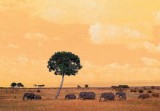 As the plot begins to unfold, our young runaway meetsa mysterious, but kindly old lady who (over tea and scones) draws him and the reader into the story of another child, Bertie. We learn he grew up on a remote farm in South Africa living in a closed compound with little company. One day, looking beyond the walls, he is entranced at the sight of a white lion cub and his mother drinking at the waterhole.
As the plot begins to unfold, our young runaway meetsa mysterious, but kindly old lady who (over tea and scones) draws him and the reader into the story of another child, Bertie. We learn he grew up on a remote farm in South Africa living in a closed compound with little company. One day, looking beyond the walls, he is entranced at the sight of a white lion cub and his mother drinking at the waterhole.
Weeks later, his father returns home triumphant from shooting a lioness, but all Bertie can think about is how the white lion cub will survive, left to fend for itself. In a dramatic turn of events Bertie goes outside the compound to rescue the ailing lion cub from a pack of hyenas, thus setting in motion a series of events that ensure the lion cub becomes part of the family. Until, that is, Bertie’s father sells the cub to a circus and Bertie is sent away to boarding school in England.
We are kept wondering about the fate of the lion, whilst following Bertie’s journey from boyhood to life as a soldier in the French trenches during WWI. It is in this foreign land that Bertie discovers what has become of the lion cub or ‘Le Prince Blanc’ as he is also known.
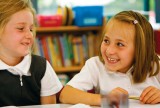 How to be a lion
How to be a lion
When the lion cub’s mother is killed, he is left to survive on his own in the wild. The problem is he hasn’t yet learnt how to do this. To begin it would be useful to look at examples of survival guides available to humans, both written and TV based. The children will need to think about the key messages to get across to the lion to help him survive - such as how to hunt, how to live with other lions and a lion’s daily routine - to include in a survival manual for lion cubs. Try the National Geographic Kids website for useful information.
A dramatic rescue
Bertie is warned on a number of occasions not to leave the safety of the compound. However, when he sees the lion cub at the mercy of a pack of hyenas he risks his own life to save him. This section of the story lends itself well to providing a template of a dilemma story – the main character is faced with a dilemma early in the story, then suspense is built as the level of risk increases, thus causing the reader to wonder how the course of action can be resolved.
Together, unpick the main events of this part of the narrative and standardise them to form a plot outline to transfer to a different setting. It might look something like this: main character sees someone/thing in danger; main character goes to help; main character’s plan begins to work; danger increases; second character intervenes; together all three return to safety; future of person/thing rescued is decided.
The children use this plot outline in a new setting (safari park, school, park etc.) ‘stealing’ some of the language features from the model to retell their own story, initially orally and then in writing.
Front page news
Millie and Bertie lose touch after they leave school and only find each other again when Millie reads in a newspaper how Bertie’s heroics have led to him being awarded the Victoria Cross. As a reader we already know the story behind this article. Get the children to extract this information and reformat it to produce the article that Millie would have read. Whilst the events are given to us in time order, the children would also need to research the Victoria Cross and look at examples of newspaper reports to identify success criteria and layout.
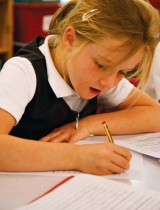 Afternoon tea
Afternoon tea
Why not involve the children in making ‘afternoon tea’ as served by Millie? As part of this mini project, design and build a cake stand (cardboard versions available online could be used as part of research); write and send invites; make sandwiches and bake scones. You could extend this further by charging people to attend and getting the children to work out the costs involved and therefore how much to charge to break even or make a profit.
Fly a kite
Bertie and Millie first meet when a kite becomes caught in a tree. Design and build simple kites using dowelling, plastic bags (or paper) and string. This will support work on 2D/3D shape, measuring and properties of materials. For many children this may be their first experience of flying a kite and their feelings from this could be captured through diary or poetry writing.
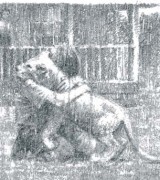 Circus time
Circus time
The lion cub is sold to Monsieur Merlot to be the star of his circus. In music and dance, explore The Carnival of the Animals by Saint-Saens (can the children work out which animals are being portrayed in the different sections?). Create a dance for the majestic lion by splitting his music into sections which tell a story – his entrance, embodying the animal through static shapes; looking around; moving as the animal using different pathways; coming together into a larger group. Extend this approach so that groups work on different animals.
Roger McGough’s poems based on the Carnival of the Animals will provide a starting point for children’s own writing, whilst in art, works by Chagall, Miro and Seurat referencing the circus will support discussion of style and developing mixed media work.
Provide a ‘role-play’ big top in the classroom, where children can develop and practise their juggling technique, clown skills and magic tricks.
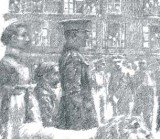 War breaks out
War breaks out
A helpful way to introduce children to the human impact of the war would be to use One Boy’s War by Lynn Huggins-Cooper. This picture book tells the story of 16-year-old Sydney’s decision to join-up in 1914 and the effect it has on him and his family. The children could create a scrapbook for Bertie (or Sydney from this story) as they research the War further and learn about recruitment, training and life in the trenches.
Putting on a performance at the end of a book gives children a clear purpose and an identified audience to work towards. Weaving elements of the learning into a final performance gives the children an opportunity to dramatise their dilemma story, demonstrate their circus skills and perform the dance and poetry they have created. Designing and making masks, costumes and backdrops would extend learning further and give opportunities to demonstrate application of skills.
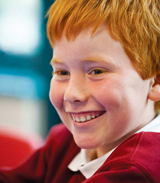 1. Visit a safari park to take photographs and film lions and other animals as part of your research.
1. Visit a safari park to take photographs and film lions and other animals as part of your research.
2. Invite into school a representative from a local animal rescue centre to talk his/her work on returning animals to the wild.
3. Book a circus skills workshop and discover which children have hidden talents!
4. Visit the site of a chalk white horse and research potential origins. Use Google Earth to view different chalk horses.
Why not involve the class in fundraising to adopt a lion? The Born Free Foundation was set up to prevent individual animal suffering, protect threatened species and keep wildlife in the wild. Their website includes reallife stories of animals returned to the wild, such as Christian the lion – a cub bought in Harrods in the 1960s. Watching the clip of Christian and his owners being reunited in the wild would also be an excellent starting point for discussion or writing response. Visit bornfree.org.uk to learn more.
The Butterfly Lion by Michael Morpurgo is published by HarperCollins (ISBN 978-0-00- 675103-8, paperback, £4.99)
Clare Pearson is deputy headteacher at Summerbank Primary School in Stoke. Previously, Clare was the Primary Advisory English Teacher for Stoke-on-Trent.
Do you have a favourite topic based on a children’s book? Then let us know! Email: .(JavaScript must be enabled to view this email address) and tell us what you’ve been up to. We’ll pick our favourite idea and share it in the magazine.
How children react to a moral dilemma may be down to your teaching
Ace-Classroom-Support
Outstanding schools: RJ Mitchell Primary
Outstanding schools
